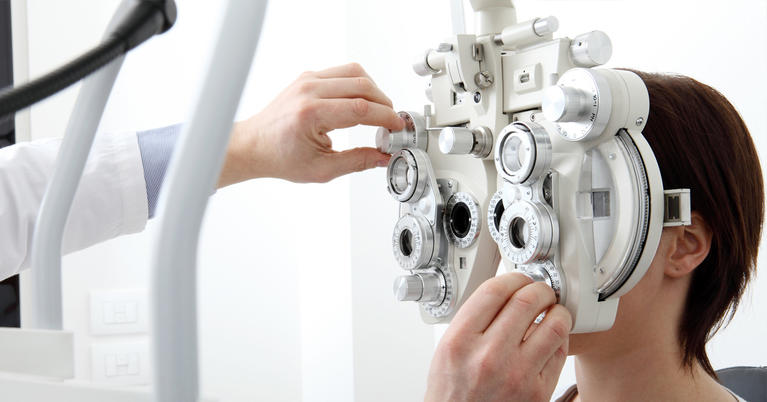Discover Andalusia's Ideal Cardiologist Clinics and Services
Discover Andalusia's Ideal Cardiologist Clinics and Services
Blog Article
The Advantages And Disadvantages of Different Refractive Surgeries for Enhanced Eyecare

LASIK Surgical Procedure
LASIK surgical treatment is a frequently done refractive procedure that intends to correct vision problems such as astigmatism, farsightedness, and nearsightedness. During the procedure, a thin flap is developed on the cornea, and a laser is utilized to reshape the underlying tissue, dealing with the refractive mistake.
One of the main advantages of LASIK surgery is the rapid enhancement in vision experienced by many individuals. It is crucial for people considering LASIK surgical treatment to go through a thorough assessment by an eye treatment professional to figure out if they are ideal prospects for the procedure.
PRK Procedure
The PRK treatment, also recognized as Photorefractive Keratectomy, is a type of refractive surgical procedure that intends to deal with vision concerns comparable to LASIK surgical procedure. Unlike LASIK, which includes producing a flap in the cornea, PRK works on the surface layer of the cornea.
Among the benefits of PRK over LASIK is that it eliminates the threat of flap-related difficulties because no flap is developed throughout the surgical procedure. This can be useful for people with thin corneas or those associated with call sporting activities where eye trauma is an opportunity. The healing time for PRK is generally longer compared to LASIK, as the outer layer of the cornea needs time to regenerate after the treatment. In spite of the longer healing period, PRK can be a suitable alternative for people looking for vision modification surgical treatment.
SMILE Surgical Procedure
A cutting-edge refractive surgical treatment technique gaining popularity in the field of ophthalmology is SMILE Surgical treatment. Small Laceration Lenticule Extraction (SMILE) is a minimally invasive treatment that fixes vision by reshaping the cornea utilizing a femtosecond laser. Unlike conventional LASIK surgical treatment, SMILE Surgery involves developing a small laceration in the cornea to extract a lenticule, which leads to less disturbance to the corneal framework and possibly faster recuperation times.
One of the key advantages of SMILE Surgery is its ability to deal with myopia (nearsightedness) and astigmatism with high precision, leading to exceptional aesthetic outcomes for individuals. The minimally invasive nature of the procedure also reduces the threat of difficulties such as dry eye syndrome, making it a positive choice for people seeking refractive surgical procedure.

LASEK Method
Having actually checked out the advantages and factors to consider of SMILE Surgery, one more noteworthy refractive surgical treatment technique worth analyzing is the LASEK Method. LASEK, which stands for Laser-Assisted Subepithelial Keratectomy, is a form of laser eye surgery that intends to deal with refractive mistakes such as myopia (nearsightedness), hyperopia (farsightedness), and astigmatism.
Unlike LASIK, LASEK does not involve producing a corneal flap. Rather, during a LASEK treatment, the surgeon uses a diluted alcohol solution to loosen the slim outer layer of the cornea, known as the epithelium. This layer is then carefully relocated aside to enable the laser to improve the underlying corneal tissue. When the cornea has been reshaped to the desired degree, the epithelial layer is repositioned.
Among the main advantages of LASEK is that it can be appropriate for people with thin corneas who might not be good candidates for LASIK. Furthermore, LASEK typically causes marginal post-operative pain and a quicker recovery time contrasted to PRK. The aesthetic healing process with LASEK might be slightly longer than with LASIK.
Implantable Contact Lenses
Implantable Get in touch with Lenses supply a lasting vision correction service for people looking for a choice to typical contact lenses or glasses. These lenses, also referred to as phakic intraocular lenses, are surgically inserted right into the eye to deal with refractive mistakes such as myopia (nearsightedness), hyperopia (farsightedness), and astigmatism. eye center andalusia. Unlike conventional get in touch with lenses that remain on the surface of the eye, implantable get in touch with lenses function within the eye itself, giving clear vision without the requirement for daily upkeep or elimination
One of the vital advantages of implantable contact lenses is their permanence. Once put, they can stay in the eye forever, supplying steady and consistent vision adjustment. Furthermore, these lenses can be an excellent option for individuals that are not great prospects for laser eye Full Report surgery or that prefer a relatively easy to fix vision correction procedure.
Nevertheless, implantable call lenses do lug some threats, consisting of the possibility for cataracts or enhanced eye stress. It is essential for people considering this alternative to seek advice from an eye care expert to identify if implantable call lenses are the right selection for their certain demands and eye wellness.
Verdict
In verdict, each type of refractive surgical procedure has its own benefits and disadvantages. LASIK surgical treatment is prominent for its quick healing time, while PRK treatment might be suitable for clients with thin corneas.

In General, SMILE Surgical treatment offers a promising choice for individuals looking to boost their vision via refractive surgical treatment.
Report this page